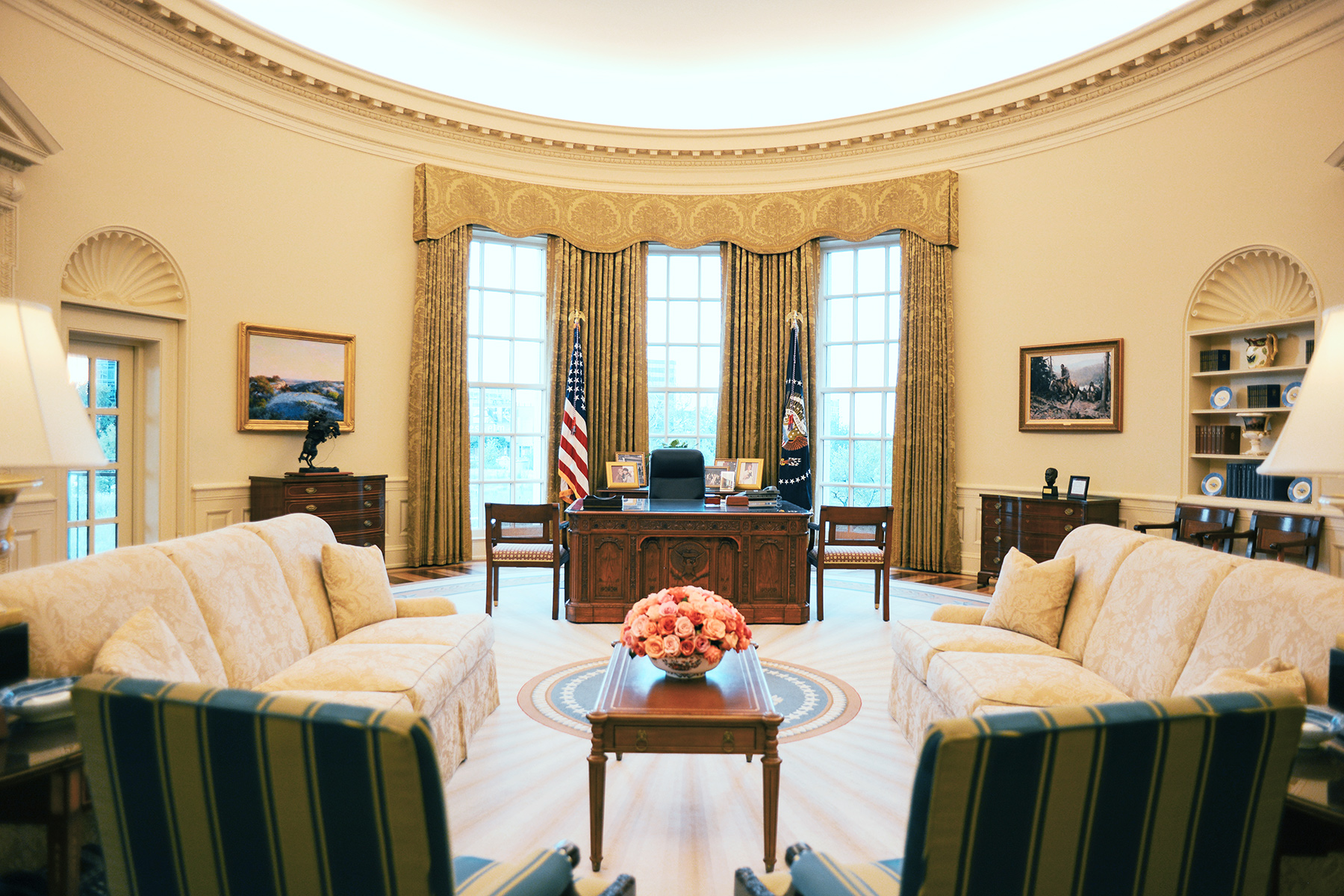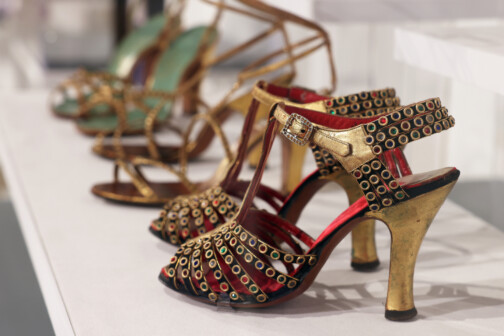On a sunny morning in February, I’m standing in the center of the George W. Bush Presidential Center just after opening. Shooting out of the floor is a rusted, crumpled steel brace recovered from one of the World Trade Center buildings. A docent rushes to intercept me. I’ll call him Speedy, in the spirit of the nickname-loving president. Speedy says I can go ahead and touch. I politely decline.
“Where are you from?” Speedy asks me, as we whirl around the elliptical exhibition room. I try to explain that I’m visiting from New York City, where I know many people whose lives were forever changed by the events of that morning. But Speedy, a middle-aged New Englander who came to Dallas decades ago for reasons unknown, isn’t listening. He has information to impart: about the timing of the planes; about a photo of the Florida schoolroom where an aide told the president, “America is under attack”; about what was found in the rubble.
I’ve heard it all before—in the months after the tragedy, at the ground zero site, on every anniversary. But then Speedy, who has the high cheeks and squished eyes of a political cartoon, says something that snaps me to attention: airplanes could not have brought down the towers. They were built to withstand such an impact. Just look at this video playing on a loop of this news host live on air, calling what has just occurred an “explosion.” I suck in my breath, afraid to influence the strange encounter unfolding before me, desperate to see it through. “The more you learn about 9/11,” Speedy says, “the more questions you have.”
That’s when I realize I’ve just paid $26 to be guided through Bush’s legacy by a man who thinks the September 11 attacks may have been an inside job.
I first began visiting presidential libraries with my mother, a history professor. There are 15 of them, scattered throughout the United States, one for each executive since Herbert Hoover and two, for reasons too boring to get into here, for Gerald Ford. Each facility is operated through a public-private partnership between the National Archives and Records Administration and various presidential foundations. The collections themselves were never the destination, exactly, but whenever we were in NARA’s orbit, my mother heeded its pull. For some reason—nostalgia? Curiosity? An appetite for Oval Office artifice?—I’ve kept the tradition alive into my adulthood. Nine museums down, an ever-growing number to go.
For researchers, presidential libraries offer an unprecedented look into past administrations. Gathered together in a single space are often scraps of personal correspondence; complete sets of the “Daily Diary,” which tracks every president’s agenda every day in office; gifts from world leaders; and more. In assembling his Pulitzer Prize-winning biographies of LBJ, for example, the journalist Robert Caro made it his motto to “turn every page” in the Austin archive. Yet surprises still remain. Lady Bird Johnson’s extensive White House audio diaries appeared in public only in 2020, thanks to the work of Julia Sweig, author of Lady Bird Johnson: Hiding in Plain Sight. To date, most presidential libraries have processed only about half of their holdings.
The adjoining presidential museums provide an altogether different experience. Staff choose items from the archives to present to the public, usually ordered in a loose chronology (“First we invaded, and then …”) and grouped according to theme (war A, war B, war C). While every museum, like every POTUS, is different, there are a few key notes everyone seems determined to hit: White House pets, First Lady fashion, and the dogged pursuit of freedom at home and abroad. Unpaid volunteer docents fade into the wallpaper, jumping forward only to encourage you to take a spin at the imitation Resolute Desk in the replica Oval Office. The whole thing often feels more like a permanent work of propaganda—open to the public and closed to interpretation.
Or at least that’s what I thought before I met Speedy.
From the outside, the Bush Presidential Center looks like any other shrine to executive power. The building, situated on the edge of the SMU campus, is dense in its symmetry, though a two-story atrium attempts to lighten the load. The entire facility cost a reported $250 million to construct, funds raised privately by the Bush foundation from sources like Service Corporation International, ExxonMobil, and AT&T. Inside, there’s a bookstore selling bobbleheads of recent presidents, a cafe serving the Bush dynasty’s favorites, and, of course, the requisite Oval Office copy. Everything appears exactly as it should.
Then Speedy does his thing. In the alternating shadows and spotlights of the 9/11 display, I can’t quite tell his motivation for foisting his conspiracy theories on unsuspecting visitors. Is he earnestly sharing his beliefs? Or is this an intentional act of political subterfuge funded by shady foreign operatives? Perhaps it’s performance art, a bit of entertainment to lighten his otherwise dull gig? Whatever the answer, I get the sense he does this all the time.
As I move forward into exhibits with names such as “Responding to September 11” and the “Defending Freedom” table, Speedy follows. We come upon an interactive map of the Middle East, but only two countries can be manipulated: Iraq and Afghanistan. It cost several hundred thousand dollars, he tells me proudly. On the wall is a static map of the world, with coordinates labeled in relationship to the War on Terror. A legend below explains what each of the more than 100 decals represents, from deadly terrorist attacks in London, Mumbai, and Jakarta, to key points in the Bush administration’s invasions, advances, and supposed victories. But Speedy explains away the entire wall as “a map of more than 100 terrorist attacks.”

We wind our way to the replica Oval Office, where I come upon my first fellow visitor. We settle into the buttermilk cream couches and look around the brightly lit room as Speedy points to various replica artworks and explains their provenance. There’s Frederic Remington’s Bronco Buster and a painting of Texas wildflowers. When the other visitor asks when we’ll get to see George Bush’s own oil paintings, Speedy informs us that at this time there’s nothing of the president’s artistry on display. “He’s not that good,” Speedy says. “He’s getting better. But they’re not that good.”
We’re emptied out the door and into an upbeat room about life in the White House. There’s an enormous portrait of the First Lady in a red gown holding her Scottish terriers on the White House lawn and pictures of the Bush twins, Barbara and Jenna. A short video plays on a loop showcasing the president’s sense of humor. On the second rotation, as 43 is once again emitting a yodeling sound to a cheering crowd, a different docent chimes in, “You can see how it’d get old after spending hours in this room.”
After a few minutes of ambling about, I realize another visitor has distracted Speedy, giving me a chance to make a break. Unfortunately, the Decision Points Theater, which allows visitors to simulate their own War on Terror, was closed due to COVID concerns. So I walk quickly through the final exhibits, the artifacts gallery blurring as I go. Back in the parking lot, I already feel the experience slipping away from me—one long hall of fun house mirrors fading.
But months later, I find myself thinking about Speedy and the other docents and what it was they were trying to tell me. That I couldn’t trust what I was seeing. That the information on display had been carefully selected out of thousands of archival boxes and millions of words of memos and speeches to create a cozy narrative of recent history. That the presidential museum was the ultimate inside job.
This story originally appeared in the July issue of D Magazine with the headline, “White House Down.” It was published online with an error (a reference to the “Resolution Desk”) that has been corrected. Email [email protected].








